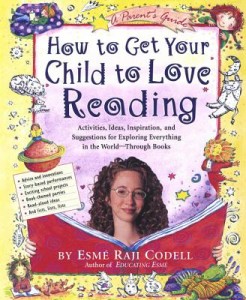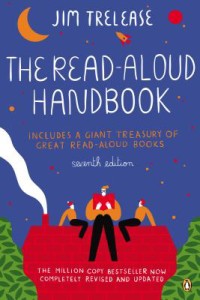Reading aloud is one of those things that seems to fall by the wayside these days. It’s a shame. Kids, parents, teachers, librarians. We’re all over-scheduled, over-worked, over-tired. And yet, for those of us who love to read and who believe in the power of story, those 15 or 20 minutes we spend sharing a favorite book with a child or a class are surely worth the extra effort.
There’s a gem of an article, written back in November of 1993, by Christopher de Vinck and published in the Wall Street Journal called, “Why I Read to My Children.” It says more succinctly than I can, why reading aloud is one of the most important things a parent can do for a child, and I’d like to think that, by extension, these same reasons can apply to teachers and librarians who read aloud to students.
The article is worth searching out and is also available in the appendix of CONVERSATIONS: Strategies for Teaching, Learning, and Evaluating (Heinemann, 1999), one of many excellent books written by well-known and respected teacher/literacy specialist Regie Routman.
Here’s an excerpt from the article:
Reading aloud to children every day gives them the widest entry to that place we call freedom. Reading aloud to children begins the slow process of education that ends in parents and teachers celebrating: “They know! They know! Their hearts and minds have made the connections. Our children are free. They know! (de Vinck, 1993)
Much has been written about the value of reading aloud, both as a  demonstration of the joy of a good book and as a tool for parents and teachers to model the reading process. Routman writes that reading aloud is a perfect way to “demonstrate thinking aloud – predicting summarizing as you go, working through tough spots.” (31) She suggests that reading aloud can be an opportunity to address pacing, model rereading for clariforing theication, make connections to
demonstration of the joy of a good book and as a tool for parents and teachers to model the reading process. Routman writes that reading aloud is a perfect way to “demonstrate thinking aloud – predicting summarizing as you go, working through tough spots.” (31) She suggests that reading aloud can be an opportunity to address pacing, model rereading for clariforing theication, make connections to  known information, and confirm or disprove predictions.
known information, and confirm or disprove predictions.
But reading aloud can be much more. Routman writes, “Sometimes, the book is so good that just reading aloud and sav moment is enough. Our silence is our appreciation. Many times, however the conversation and interaction around the book are what make reading aloud powerful. (32)For specific hints about the how-tos of reading aloud, check out Esmé Raji Codell’s terrific list, Hints for Reading Out Loud, as well her favorite read-aloud recommendations and book, How to Get Your Child to Love Reading.
One more classic resource? The Read-Aloud Handbook (Penguin Books, 2013) by Jim Trelease, now in its 7th edition.










